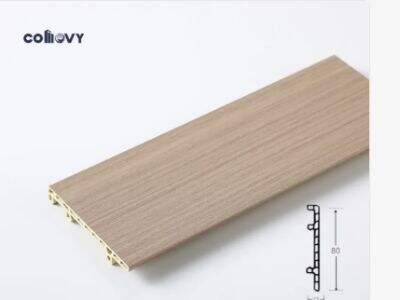As you renovate your house, you will need to ensure that you have the skirting organized. Skirting is a molding that runs along the base of your walls designed to finish everything off and give things a tidy look. PVC skirting, in particular, is a common choice because it is quick to install and low-maintenance. But some more frequent mistakes can also be made while installing PVC skirting. But we know how not to do things; so you can avoid the same mistakes in your home.
Measure twice, cut once is important when cutting PVC skirting in the first place
Cut skirting boards too short, and they'll not fit and instead leave ugly gaps on the wall On the flipside, if you cut it too long, it will be flopping out and messing with wall look. Measure twice, cut once to avoid this mistake!
Most people use the wrong adhesive, or they use less adhesive than what will be needed. The pvc skirting usually needs a very strong adhesive, specially formulated for this type of material. However, if the skirting is glued in with the wrong adhesive, it will scratch and separate from the wall over time. Also, too little adhesive can cause the skirting to become separated leading to gaps. Avoid this by always reading the manufacturer's guidelines and use a good glob of adhesive to secure the connection.
Common error is failing to create expansion gaps in PVC skirting
Another common error is failing to create expansion gaps in PVC skirting for when temperatures change, which will lead to problems further down the line. Since pvc skirting board moves with the temperature (it expands and contracts) you should also consider leaving some gaps on a regular basis across each wall. Since skirting is made from wooden beams that wood might actually contract and expand as it dries, so gaps have been left between the beams to let the skirting move without creating a buckled or warped effect. If you fail to leave expansion gaps, this can put pressure on the skirting and lead to it cracking over time.
The installation of PVC skirting
The installation of PVC skirting in inclined walls or slanting surfaces is the mistake which create sloppy and unprofessional finishing to your wall. To start the installation, be sure to prepare the wall beforehand by patching and leveling out any cracks. Skirting will be directly installed on the walls, so if your surface is not smooth then its look may be deteriorated. Invest time making sure the walls are prepped correctly for a neat and professional look.
Laying PVC skirting
Finally, when laying PVC skirting, many people fail to seal the corners and joints to ensure a uniform surface. Corners and joints are places where dirt and dust will naturally accumulate, so it is important to adequately seal at least those areas. Run a bead of sealant using a caulking gun along the edges of the skirting that is touching against the walls. The outside bands fit more tightly at the top, creating a better seal and making your walls look seamless.
So, when having PVC skirting installed in your home be sure to take these into account to ensure a professional and durable end product. Important things to keep in mind are to measure accurately, use the appropriate adhesive, leave space for expansion gaps, prepare uneven walls and seal corners and joints. Using these tips, you can accessorize your home using Kamowei pvc skirting builders without any stress or headaches.




